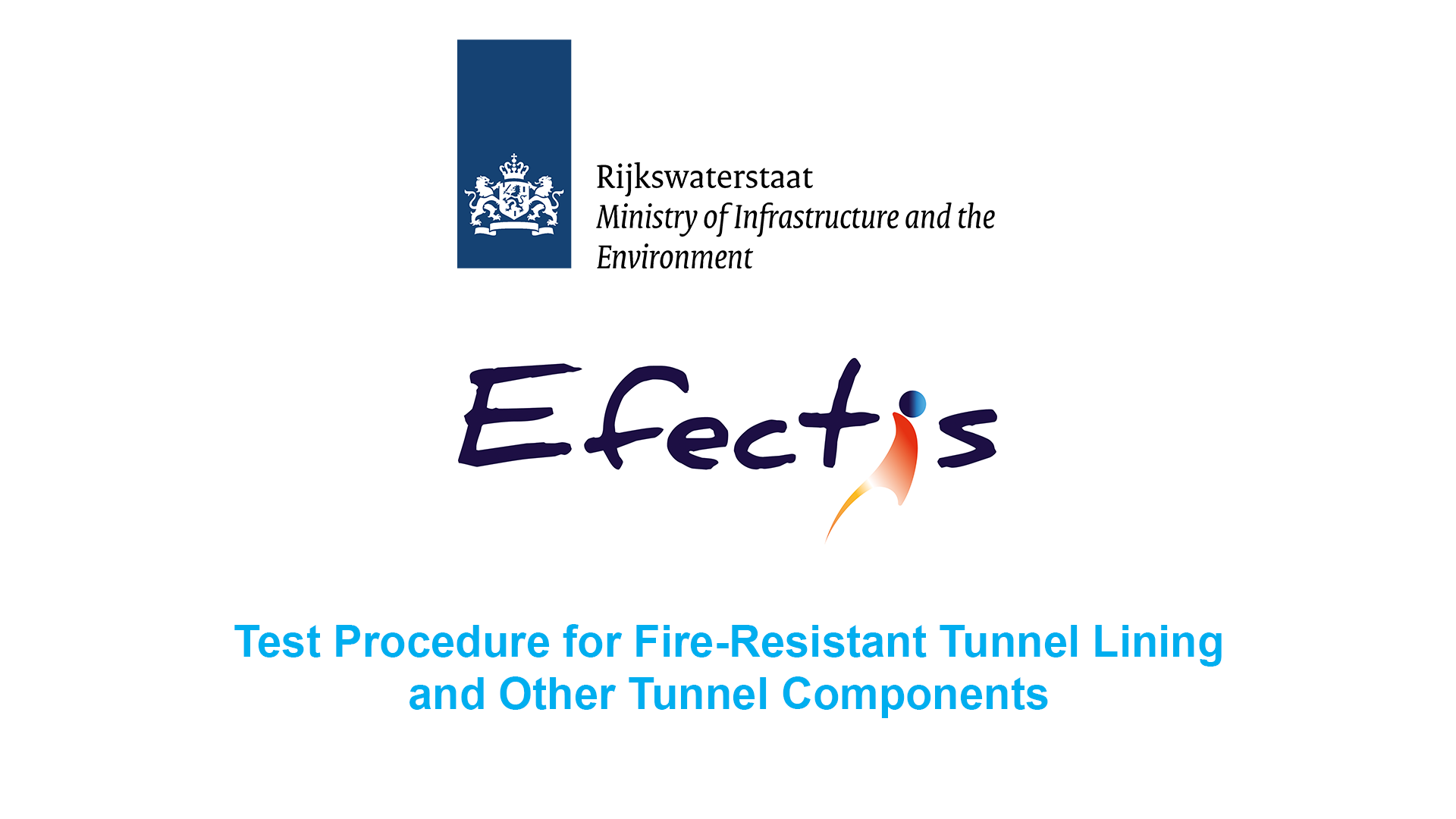Following a tragic accident in 1978 in which 5 people died after a fire in the Velser tunnel in the Netherlands, Rijkswaterstaat (RWS) and Efectis Nederland (then the TNO Center for Fire Safety) investigated the thermal loads on the tunnel structure based on a “worst case” fire scenario. The outcome of this study became what is now known as the RWS Fire Curve which, along with accompanying test procedures, is now recognized and applied around the world to assure the fire resistance performance of components for use in tunnels.
The first joint procedure between RWS and TNO, titled “Fire Protection for Tunnels”, was published in 1998 as a method for demonstrating that tunnel linings possess the necessary the thermal protective properties and that they remain in place during a major fire”. After a revision of this document in 2000, a major update of the procedure was released in 2008 called “Fire Testing Procedure for Concrete Linings”, Efectis report number 2008-Efectis-R0695.
With effect from September 1, 2020, RWS and Efectis Nederland have now published the 3rd version of the test procedure. The procedure retains the familiar number R0695, with an update to reflect the year of the new revision, becoming Efectis report number 2020-Efectis-R0695.
The updated title of “Fire testing procedure for concrete tunnel linings and other tunnel components” reflects what has been added to the procedure, now allowing components in addition to concrete tunnel linings to be evaluated against fire-resistant requirements. The procedure also now describes the procedures for using a mobile oven to test existing tunnels.
This important report is the result of a collaboration between Efectis Nederland and Rijkswaterstaat, and it can be downloaded from the Efectis Netherland website.

